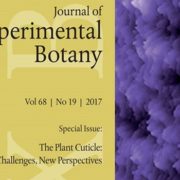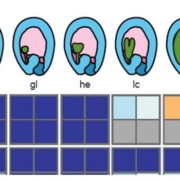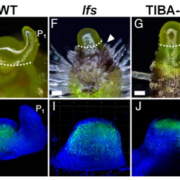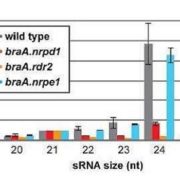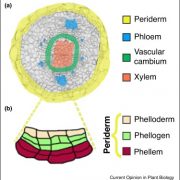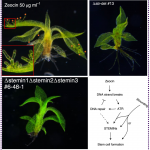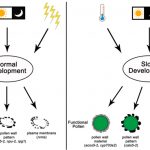The manifold actions of signaling peptides on subcellular dynamics of a receptor specify stomatal cell fate (eLife)
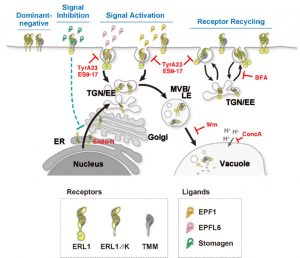 Stomatal development requires cell-to-cell communication and follows one cell spacing, with a minimum of one cell space between two stomata. Key to this communication are the ERECTA and ERECTA LIKE (ERL) Leucine-Rich Repeat domain-Receptor Like kinases (LRR-RLKs) and their ligands, the EPIDERMAL PATTERNING FACTOR (EPF) and EPF-LIKE peptides. Often, a single receptor has different phenotypic outcomes in the same developmental pathway, and how the receptor subcellular dynamics translates to a given phenotype has remained elusive. In this paper, Qi et al. used pharmacological, cell biological, and genetic experiments to investigate the subcellular dynamics of ERL1. Application of the peptides EPF1 and EPFL6, negative regulators of stomatal development, resulted in endocytosis of the ERL1 thorough the trans-Golgi network and multi-vesicular bodies to the vacuole for degradation. ERL1 endocytosis stimulated by EPF1 depends on TOO MANY MOUTHS (TMM), an ERL1 co-receptor, but EPFL6-mediated endocytosis is independent of TMM. However, the interaction of ERL1 with a stimulatory peptide, EPF-LIKE9 (also known as STOMAGEN), results in a high lifetime of the ERL1 on the plasma membrane and accumulation of ERL1 in the endoplasmic reticulum. The authors also show that the cytoplasmic domain of ERL1 is necessary for the ligand-induced subcellular dynamics of ERL1. Thus, this paper shows elegantly how the interaction of different ligands like EPF1, EPFL6 and STOMAGEN to the same receptor have different phenotypic outcomes based on subcellular trafficking. (Summary by Vijaya Batthula @Vijaya_Batthula) eLife 10.7554/eLife.58097
Stomatal development requires cell-to-cell communication and follows one cell spacing, with a minimum of one cell space between two stomata. Key to this communication are the ERECTA and ERECTA LIKE (ERL) Leucine-Rich Repeat domain-Receptor Like kinases (LRR-RLKs) and their ligands, the EPIDERMAL PATTERNING FACTOR (EPF) and EPF-LIKE peptides. Often, a single receptor has different phenotypic outcomes in the same developmental pathway, and how the receptor subcellular dynamics translates to a given phenotype has remained elusive. In this paper, Qi et al. used pharmacological, cell biological, and genetic experiments to investigate the subcellular dynamics of ERL1. Application of the peptides EPF1 and EPFL6, negative regulators of stomatal development, resulted in endocytosis of the ERL1 thorough the trans-Golgi network and multi-vesicular bodies to the vacuole for degradation. ERL1 endocytosis stimulated by EPF1 depends on TOO MANY MOUTHS (TMM), an ERL1 co-receptor, but EPFL6-mediated endocytosis is independent of TMM. However, the interaction of ERL1 with a stimulatory peptide, EPF-LIKE9 (also known as STOMAGEN), results in a high lifetime of the ERL1 on the plasma membrane and accumulation of ERL1 in the endoplasmic reticulum. The authors also show that the cytoplasmic domain of ERL1 is necessary for the ligand-induced subcellular dynamics of ERL1. Thus, this paper shows elegantly how the interaction of different ligands like EPF1, EPFL6 and STOMAGEN to the same receptor have different phenotypic outcomes based on subcellular trafficking. (Summary by Vijaya Batthula @Vijaya_Batthula) eLife 10.7554/eLife.58097


